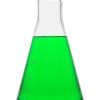


Former, now recovering chemist, Dad, and outdoorsman looking to get my off-grid life in order. Science, COVID and a little politics are most of what I talk about.
If you aren't outraged, you aren't paying attention.
Planning to move full time to my other account @BE soon as this instance is still having issues. If I followed you there and you'd like to, please follow back.
This profile is from a federated server and may be incomplete. Browse more on the original instance.